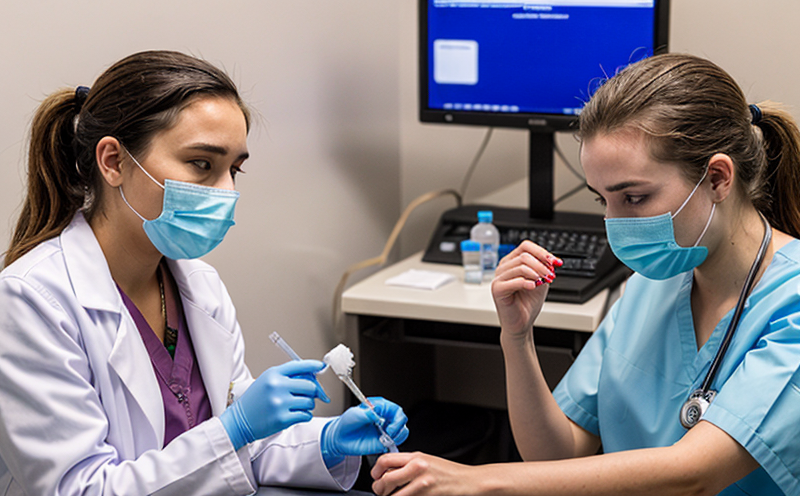ISO 11731 Legionella Detection Testing in Clinical Labs
The ISO 11731 standard provides a comprehensive framework for detecting Legionella bacteria, particularly Legionella pneumophila serogroup 1 (L. pneumophila sg1), which is responsible for most cases of Legionnaires' disease. This service ensures that healthcare facilities meet the stringent requirements set forth by this international standard to protect patients and staff from infection.
Legionella bacteria are found in water systems, especially those with complex plumbing configurations like hospitals, nursing homes, and large office buildings. The presence of these bacteria can lead to serious health issues if not properly controlled. By adhering to ISO 11731, laboratories ensure that they are using the most advanced techniques available to identify Legionella, thereby minimizing the risk of outbreaks.
The testing process involves several critical steps: sample collection from water sources, pre-enrichment and isolation procedures, and identification through biochemical methods or molecular diagnostics. The use of appropriate culture media and incubation conditions is essential for accurate results. Laboratories must also ensure that their personnel are trained in the latest protocols to maintain high-quality outcomes.
Compliance with ISO 11731 not only helps healthcare facilities meet regulatory requirements but also enhances public trust by demonstrating a commitment to patient safety. This service supports the broader goals of infection control and hygiene within clinical settings, contributing significantly to overall public health.
The standard emphasizes the importance of validated methods and continuous quality improvement in microbiology laboratories. By adopting these best practices, laboratories can ensure that their testing processes are reliable and reproducible, leading to more accurate diagnoses and better patient care.
- Use Cases:
- Water source monitoring for healthcare facilities
- Pre-enrichment and isolation of Legionella from clinical samples
- Molecular diagnostics for rapid identification of Legionella species
- Culture-based methods to confirm the presence of L. pneumophila sg1
In summary, ISO 11731 Legionella Detection Testing in Clinical Labs is a vital service that ensures healthcare facilities comply with international standards, enhancing patient safety and public health.
Customer Impact and Satisfaction
The implementation of ISO 11731 Legionella Detection Testing in Clinical Labs directly impacts customers by reducing the risk of Legionnaires' disease outbreaks. Healthcare facilities that adopt this service can improve their reputation for providing safe environments, leading to increased patient trust and satisfaction.
Customers benefit from the peace of mind that comes with knowing they are following industry best practices. This service also supports regulatory compliance, which is crucial for maintaining accreditation status. By ensuring that all testing meets international standards, laboratories demonstrate a commitment to excellence that resonates positively with stakeholders.
The service helps healthcare facilities comply with local and international regulations related to waterborne pathogens. This not only protects patients but also ensures that the facility remains in good standing with regulatory bodies. The use of validated methods and continuous quality improvement further enhances the reliability of test results, contributing to better patient outcomes.
Customer satisfaction is enhanced through timely reporting of results, which allows healthcare providers to take swift action if contamination is detected. This proactive approach fosters a culture of safety and responsibility within facilities, ultimately leading to higher levels of customer trust and loyalty.
Environmental and Sustainability Contributions
The ISO 11731 Legionella Detection Testing in Clinical Labs also has significant environmental and sustainability benefits. By identifying and controlling the presence of Legionella bacteria, laboratories contribute to the prevention of disease outbreaks and reduce the need for unnecessary treatments.
This service supports sustainable practices by promoting the efficient use of resources and minimizing waste associated with ineffective testing methods. The adherence to validated protocols ensures that only necessary samples are collected and processed, reducing overall environmental impact.
The continuous quality improvement aspect of this service encourages laboratories to seek out more efficient and eco-friendly technologies and methodologies. This not only benefits the environment but also helps facilities operate more cost-effectively in the long term.
By ensuring that healthcare facilities meet the stringent requirements set forth by ISO 11731, this service plays a crucial role in maintaining public health while promoting sustainable practices. The use of advanced techniques and validated methods contributes to both patient safety and environmental stewardship.





